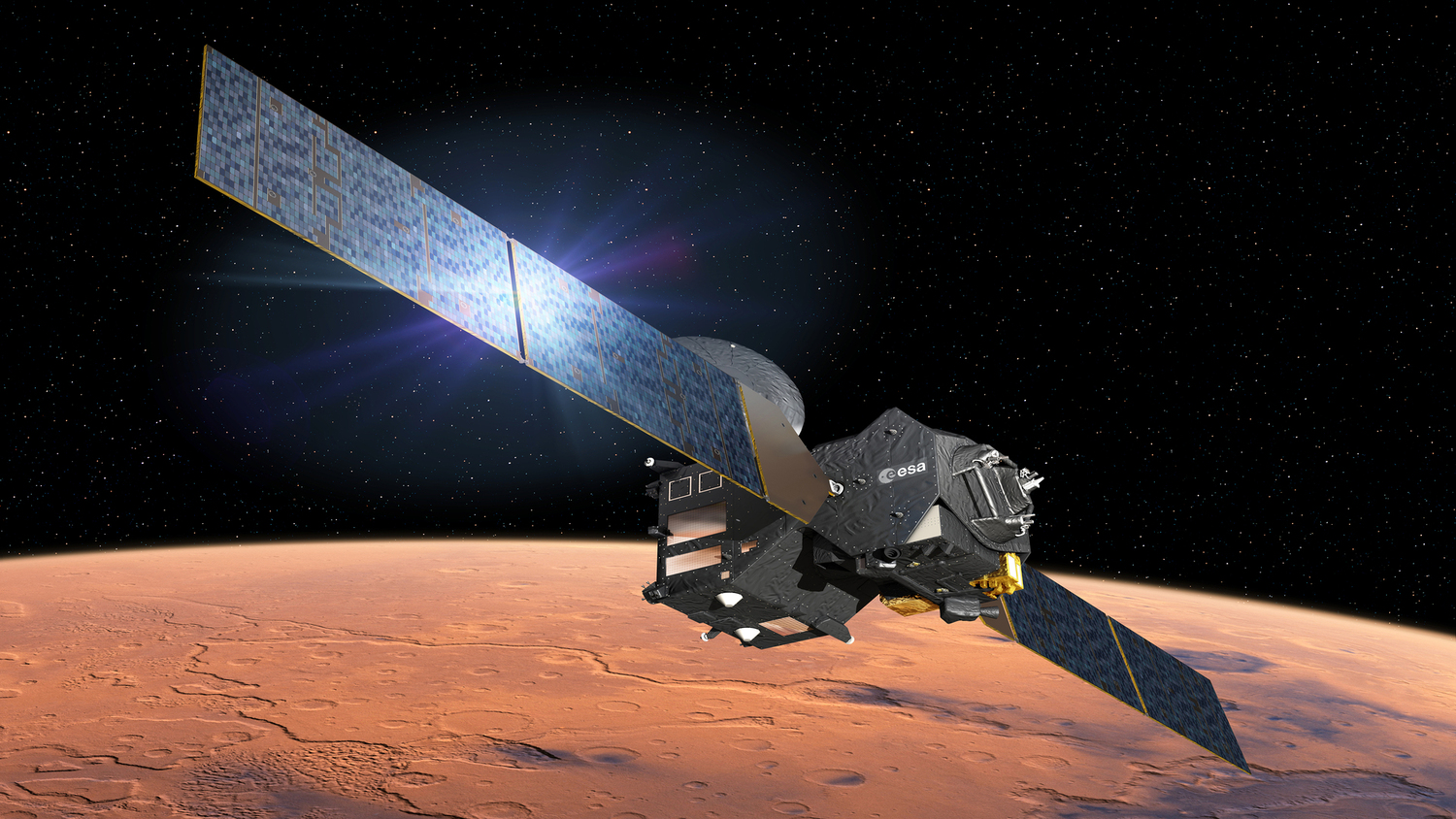Of the large amount of water that once flowed on the surface of Mars, today important reserves remain concentrated in surface ice caps or in the subsoil of the planet. Mars still constantly loses water, in the form of hydrogen and oxygen in gaseous form that escape from its tenuous atmosphere, freeing itself into space. Understanding the interaction of Martian water reserves and their behavior both with the changing seasons and over longer times is fundamental to understanding the evolution of the climate of Mars. This can be done through the study of water vapor and “semi-heavy” water, where one hydrogen atom is replaced by one of deuterium, an isotope of hydrogen with an extra neutron in its core. The study was published today in the journal Science Advances.
“The deuterium / hydrogen ratio, D / H, is our chronometer – a powerful tool that tells us the story of water on Mars, and how water loss has evolved over time. Thanks to’ExoMars Trace Gas Orbiter, we can now better understand and calibrate this chronometer and test it to plot potential new water reserves on Mars – says Geronimo Villanueva of NASA’s Goddard Space Flight Center, first author of the paper describing the study.
“With the Trace Gas Orbiter we can observe the path of the water isotopologists as they rise into the atmosphere in a level of detail never before achieved. Previous measurements provided only the average over the depth of the entire atmosphere. It’s as if before we only had a 2D view, now we can explore the atmosphere in 3D – adds Ann Carine Vandaele, principal investigator of the instrument. Nadir and Occultation for MArs Discovery (NOMAD) that was used for this investigation.
The new measurements reveal extreme variability of the D / H ratio with altitude and season as the water rises from its home area. “It is interesting to note that the data show, once the water is completely vaporized, above all a general enrichment in semi-heavy water, and a D / H ratio six times higher than that of the Earth in all places where reserves are found water on Mars, confirming that large quantities of water have been lost over time – says Giancarlo Bellucci, co-author of the article and head of the Italian scientific team of the NOMAD instrument which is supported byItalian Space Agency, which has been actively contributing for years to missions to the planet Mars and has gained an important international scientific and industrial leadership.
“NOMAD’s observations therefore suggest that Mars has lost much of its original water, probably due to high-altitude transport mechanisms such as those observed by NOMAD, where the molecule is then broken down by solar ultraviolet rays and dispersed into space. These results – concludes Bellucci – were obtained thanks to the important contribution of the Italian Space Agency which also supported the Italian group involved in the scientific activities of the NOMAD instrument on board the TGO ».
ExoMars data collected between April 2018 and April 2019 also showed three situations that accelerated the loss of water from the atmosphere: the great dust storm of 2018 that swept across the planet, a brief but intense regional storm in January 2019 and the release of water from the south polar ice cap during the summer months related to seasonal change. Of particular note is a plume of water vapor clearly evident during the summer in the southern hemisphere of Mars, which could release water vapor into the upper layers of the Martian atmosphere both seasonally and annually.
Future coordinated observations with other spacecraft, including MAVEN by NASA, which analyzes the outer layers of the atmosphere of Mars, will allow us to better understand the processes of water loss during the Martian year.
–


